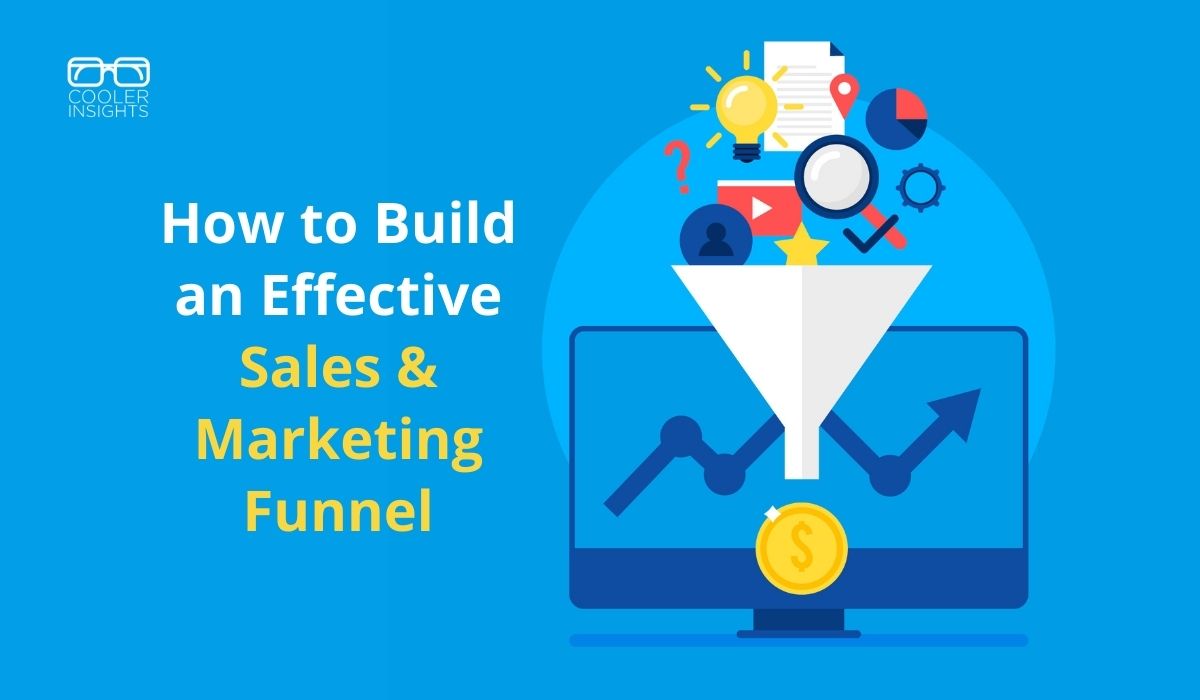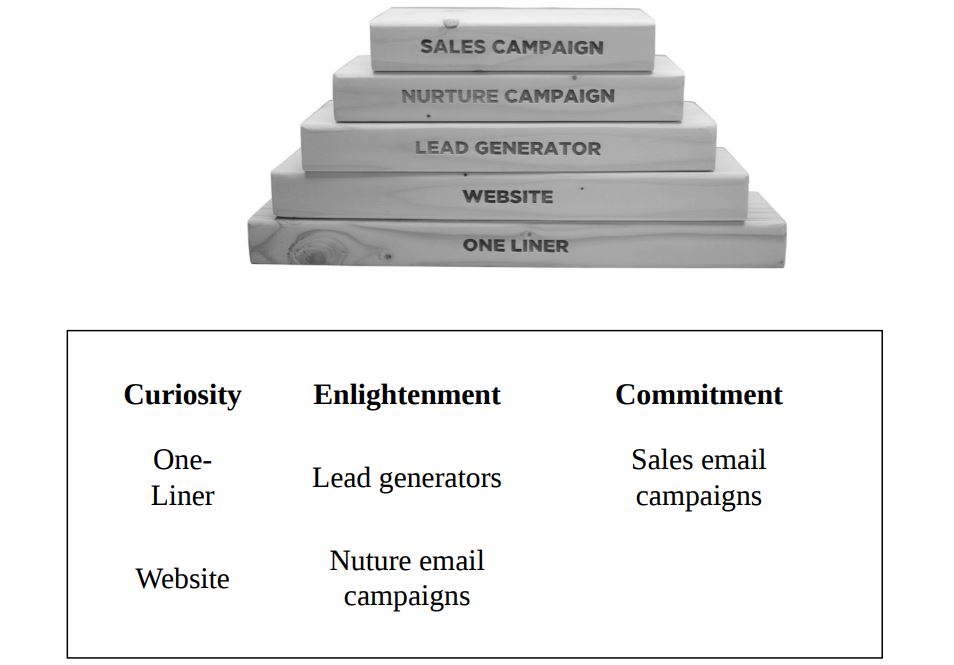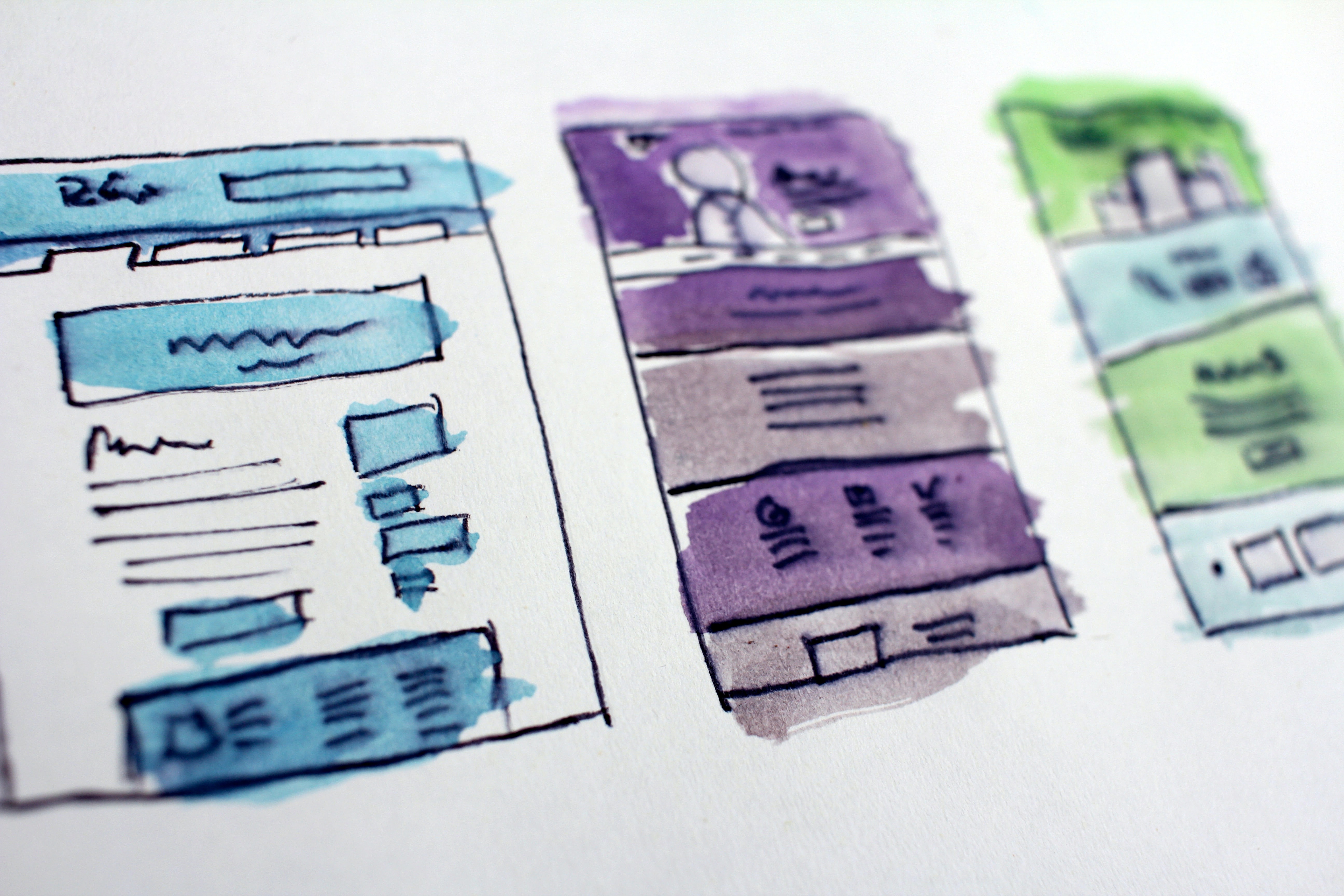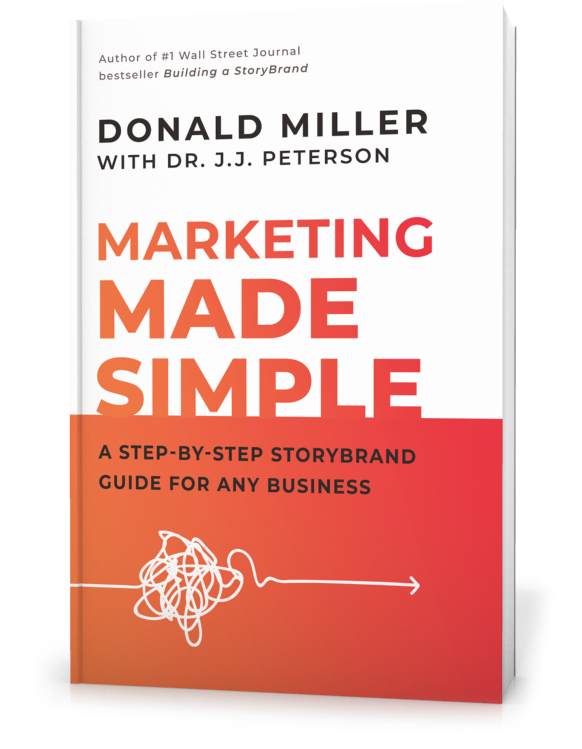
Background vector created by freepik – www.freepik.com
Wish to have a structured way to attract attention, generate leads and improve sales? Build a sales and marketing funnel!
Also called a sales funnel or a digital marketing funnel, it provides a systematic way to attract your target audience, nurture prospects, and nudge them towards a buying decision.
Thanks to the wonderful book Marketing Made Simple—A Step-by-Step Guide for Any Business by Donald Miller and Dr J.J. Peterson, we now have a structured process to build a digital marketing plan.
In this article, I will summarize some of its key precepts and ideas, with slight modifications based on my own experience in digital marketing.
(And yes, you can get a PDF copy of the book for free—simply fill in your particulars here!)
Let us first look at the overall structure of the marketing sales funnel.
Anatomy of a Marketing Sales Funnel
What is the goal of your sales funnel? According to the authors, it should serve the following…
- Break through advertising clutter
- Speak directly to customers
- Support your advertising campaigns (these should be targeted at driving traffic to your funnels)
- Allow you to sell your product or service
Called The Marketing Made Simple Checklist, the book’s version of a funnel guide customers through the three stages of relationships:
- Curiosity—One-liners “pique your customer’s curiosity”, which is deepened with wireframe websites and landing pages that “further intrigue them about the problems you solve.”
- Enlightenment—Lead generators (or lead magnets) enlighten your prospects on why your products and services will work for them, while nurture email campaigns build trust.
- Commitment—Sales emails and calls to action ask for commitment from your prospects “without making you sound like a sleazy salesperson.”
This is how the five pieces of a sales funnel will look like:

Courtesy of Marketing Made Simple
#1 Craft a Storytelling One-Liner

This is the first step in growing your business, and your goal is to create a one-liner that kind of functions like an elevator pitch or a boilerplate. This is like a super-tiny story with a three-act structure!
According to the authors (Donald Miller also wrote the wonderful Building a Storybrand book), your one-liner can be built this way:
Step 1: Customer Problem
Always start with the problem that your customers face—this is also called the hook of your story. This can be the pain point or challenge that they face:
- Many small business owners are too busy to build their brands on social media.
- As a young working mother, you need to juggle work, family and housework.
- Do you find it difficult to keep to an exercise routine?
Step 2: Solution
Next, you continue your customer’s story loop by providing the solution to their problem. In this case, you should directly describe how you solve it.
No jargons. No bombastic language. No technical terms. No cute or clever language.
Let’s look at the three examples above.
- Many small business owners are too busy to build their brands on social media. At Cooler Insights, we help you to set-up and optimize your social media brand.
- As a young working mother, you need to juggle work, family and housework. Our unique weekly coaching and planning session helps you to maximise your life.
- Do you find it difficult to keep to an exercise routine? You’re not alone. As fellow PMEs ourselves, we’ve come up with the perfect plan for you to keep fit.
Step 3: Result
This is what your prospect is waiting for: the What’s In It For Me (WIIFM) answer!
Here you should describe the “happy ending” that your solution provides.
Let’s see how we can end our three mini-stories above.
- Many small business owners are too busy to build their brands on social media. At Cooler Insights, we help you to set-up and optimize your social media brand so that you can focus on growing your business.
- As a young working mother, you need to juggle work, family and housework. Our unique weekly coaching and planning session helps you to maximise your life, giving you more time to do the things you love and enjoy.
- Do you find it difficult to keep to an exercise routine? You’re not alone. As fellow PMEs ourselves, we’ve come up with the perfect plan for you to keep fit, allowing you to have the best of all worlds.
How to Use Your One-Liner
Once you’ve got your one-liner or elevator pitch done, you can use it virtually everywhere…
- On your emails
- On your business cards
- On your website (the first paragraph on your About Us or your home page)
- On your social media profiles—Facebook Pages, Instagram Account, Twitter Account, LinkedIn Company Page, YouTube Channel Description….
- In a cocktail party
- And yes, in an elevator!
#2 Wireframe and Build a Website

Your website still is the most important piece of your online real estate. It is the place where your potential customers can learn all about you—so make sure that you plan for it well!
Also known as your landing page, it is the place where your potential customers can learn how to solve their problem and remove their pain points using your products or services.
There are lots of resources available out there on how to wireframe your website. I will also be crafting a piece based on the StoryBrand technique, so look out for it!
I’ve also written several articles in the past on best practices to build a website—see if these are helpful for you:
- How to Design a High Converting Website
- How to Build Successful Landing Pages
- Conversion Rate Optimization Mistakes to Avoid in Your Website
- How to Create a Good First Impression with Your Website
#3 Offer a Lead Magnet

Also known as a lead generator, the goal here is several fold:
- Position your brand as a guide or mentor helping your prospect to do better
- Differentiate your brand and make it distinctive
- Build trust and inculcate brand affection
- Qualify and shortlist your target audience, using the right incentives
- Engender goodwill and create reciprocity
Often embedded with a landing page that has an opt-in form—this is a device to capture your prospect’s name, email address, phone number, company name and other data—a lead magnet is a powerful tool to trigger goodwill.
Lead magnets may include any of the following:
- eBooks and guides
- Templates
- Checklists
- Questionnaires
- A diagnostic tool (often online)
- A calculator or spreadsheet
- A free webinar
- Instructional videos
- Online courses (often delivered through a series of emails)
- Product samples
- Free trials
- Free consultations/ assessments/ audits
- Exclusive invitations
You can learn more about lead magnets in this article and download our free Facebook Lead Gen ad guide here!
#4 Nurture Email Campaign

Once you’ve captured your prospect’s particulars, you should start to nurture that relationship (aka lead nurturing) through a series of emails.
Also known as a nurturing email campaign, this series of emails should seek to…
- Solve a customer problem—the more specific, the better!
- Offer value—provide specific content, tips, or access to your prospect
- Remind your customer about your solution
- Drive customers back to your website with a CTA/ link
According to the book, the best way to structure your emails is to use the following format:
- Clear and catchy title that catches your recipient’s attention in the inbox
- State the problem that he or she faces
- Deliver the solution—break it down into a step-by-step guide if necessary
- Position yourself as a guide. Do so by expressing empathy and demonstrating authority and competency in your field.
- Let them know what product you have to sell—if necessary, include a CTA to a contact form
Here are a couple of ideas that you can consider.
a) Weekly Tips and Tricks
These are the mainstay of most weekly emails, and they help your prospect to solve their problems.
Do be consistent and seek to offer genuinely helpful content that helps your recipients to do better in their life, work or relationships.
b) Product Updates and Announcements
Sharing what’s new in your business can be a good way to nurture relationships with your leads. Avoid being too pushy and salesy.
Here are some ideas that you can consider:
- Menu updates and weekly specials (make sure you include photos!)
- New products
- Events that are happening in the week
- Updates to your team
- Tips and tricks on using your product/service
- Customer stories
- Product features
c) What’s in the News
Do also send out emails that keep your recipients abreast of the latest developments in your industry.
These could be policies or algorithm changes that affect your customers. Or updates to the business or consumer environment that may affect your client.
You can also highlight some of the latest trends and tastes in your space.
#5 Sales Email Campaign

The buck stops here. Or it starts here, since your ultimate goal in digital marketing should lead to a sale.
There are many email sequences that you can consider in trying to close a sale (here’s one from Jeff Walker).
In the book, Miller and Peterson propose a six email sales sequence that you can consider:
- Email #1: Send the lead magnet—this should be nice and short
- Email #2: Provide a problem and solution—share a useful tip which resolve your recipient’s exact pain point
- Email #3: Customer testimonial—use one of your happy customer testimonial to nudge your prospect towards a buying decision
- Email #4: Address an objection—answer one of your potential customer’s likely objections in your email
- Email #5: Change the way they think—share a new way of thinking about an old problem: “You used to think this, but now you should think this way.”
- Email #6: Sell, Sell, SELL!—ask for the sale and be direct about it. Include a bonus with an expiry date to trigger scarcity.
Conclusion
Hope that you found this summary useful. I certainly learned a lot from the book, and intend to apply it for both my agency as well as my clients.
There are a lot more useful stuff in the Marketing Made Simple Book though, so do get a copy or download a free PDF version here.
Have you built your sales and marketing funnel yet? What is your greatest challenge in doing so?


Thanks for the amazing article. I learned amazing facts about sales and marketing funnels
very nice post amazing post thank u sir